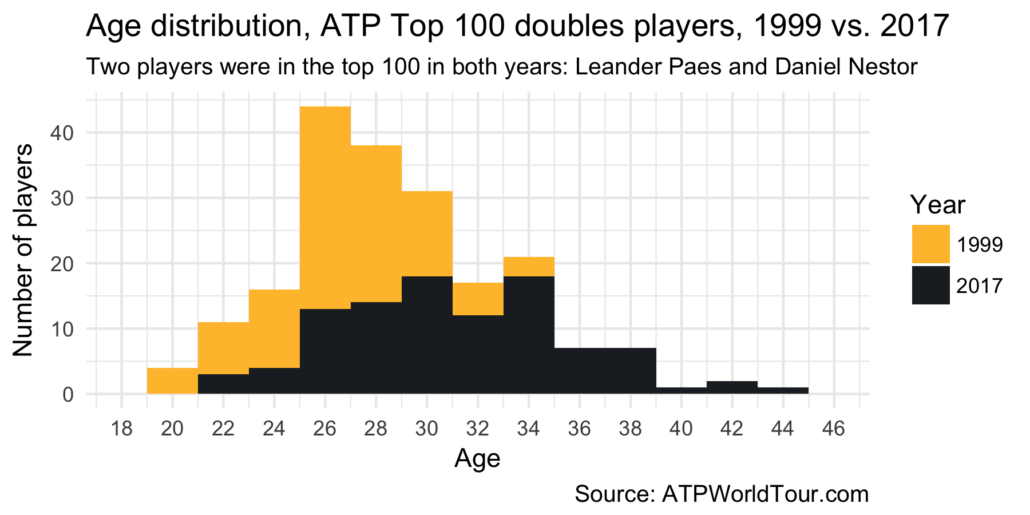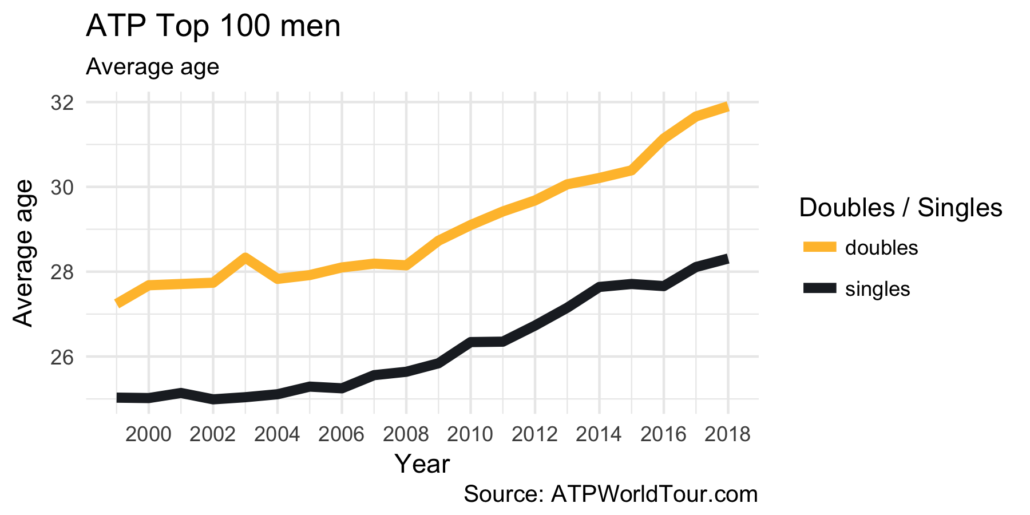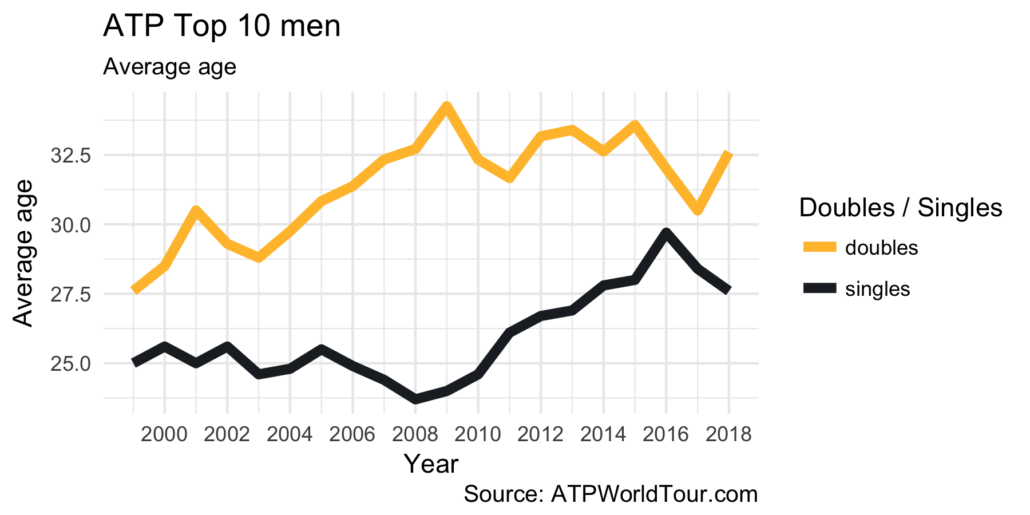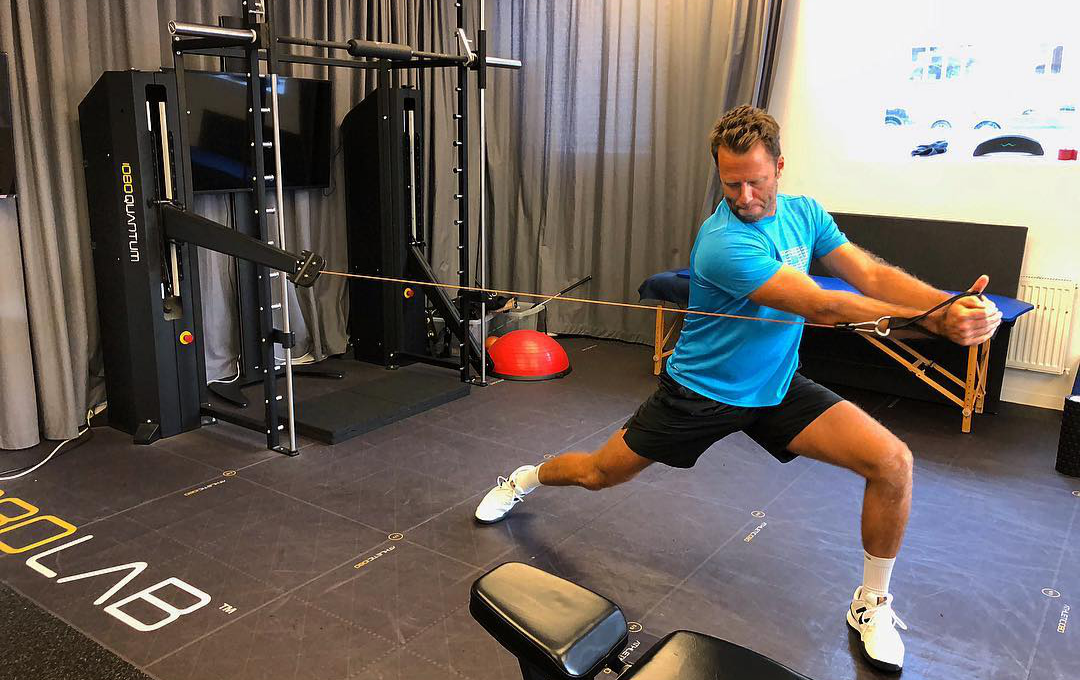Young tennis players embarking on their professional careers in the late 1990s and early 2000s had little reason to think time was on their side. Advances in sports science now give the advantage to veterans like Robert Lindstedt, who is looking ahead to his third decade on the ATP Tour.
When a 21-year old Robert Lindstedt started his first full year on the pro tour in 1999, the average age of the top 100 players in singles and doubles was just over 26 years old. The oldest singles player in the top 100 was 33, and the oldest doubles player was 34.
Six years later, Lindstedt cracked the Top 100 for the first time as a doubles player, and already the landscape had shifted. Lindstedt started 2005 ranked 92nd. The average age among the top doubles player had crept up to 28, but now a 40-year old was among their ranks. Rick Leach – aged 40 and ranked 48th – was among four players in the top 100 older than the oldest player from 1999.
Robert Lindstedt has remained in the doubles’ Top 100 ever since. He reached his career-high ranking at #3 in 2013, aged 35. By that point, he was five years older than the average player in the Top 100, but still six years younger than the oldest.
Twenty years of professional tennis means Robert Lindstedt has experienced massive evolutions in training and conditioning, both for sports in general and tennis in particular. “I literally started out with bench press and biceps curls, biking, running on a treadmill… idiotic as a tennis player! A lot of training at the pro level is still done by chance, rather than knowing how you’re feeling and why, knowing the difference between feeling tired and really being out.”

Lindstedt’s career was nearly a casualty of the haphazard conditioning methods. Years of back issues caught with Lindstedt in his early 30s. An MRI revealed bulging and herniated discs. The pain reached the point where Lindstedt could not even put on his own socks. Lindstedt contacted Ali Ghelem in search of a non-surgical solution.
“The strength and mobility tests like the 1080 MAP found my left hip was not moving at all, and my lower back compensated too much. We worked on opening up my hips and making them more mobile. Everything was painful in the beginning. We had to find ways to get the mobility going without causing more injury.
“Ali’s an absolute genius. It was a lot of trial and error, and a lot of strengthening and stability work. I needed my back muscles to hold tone, so I couldn’t get too much massage or do too much flexibility without the right amount of stability.”

Ghelem introduced Lindstedt to the 1080 Quantum so they could work on flexibility and strength simultaneously. “I use it the way Ali tells me to. It’s amazing for training but even better for rehab because of the real-time feedback and how it gives you what you need.
“Think about where you need tension. Do a range-of-motion exercise with a rubber band. You need a band to be light at the end range, but that’s where it’s tight. The Quantum gives you a full range-of-motion at the same tension throughout, including where you need it most at the end range.”
From the early stages, Ghelem did something Lindstedt would not do himself: account for his age.
“Ali respects my age more than I do, and if he didn’t I wouldn’t. Ali has to control me rather than push me. ‘Do this and only this, then rest, eat and sleep.’ If he orders me to lie on the couch, I do it. He’s a fitness coach and a mother at the same time.”
[av_button_big label=’Must read:’ description_pos=’below’ link=’manually,https://1080motion.com/1080-quantum-basketball-rehab-chris-stackpole/’ link_target=” icon_select=’no’ icon=’ue800′ font=’entypo-fontello’ custom_font=’#ffffff’ color=’theme-color’ custom_bg=’#444444′ color_hover=’theme-color-subtle’ custom_bg_hover=’#444444′ av_uid=’av-1cq3jiz’]
Basketball rehab with 1080 Quantum: Data triumphs over timelines
[/av_button_big]
Ghelem moved Lindstedt away from multiple training sessions in a day to more intense quality practices. Their warmup takes about an hour, followed by 60-120 minutes on the court and then another 45 minutes for cooldown. But that is not to say Ghelem and Lindstedt are taking it easy on one another.
“I thought I was training hard during college. Then I came to the Challengers and thought they were training even harder. Then I reached the Tour and said ‘wow, I know nothing!’ Ten years after I started playing doubles on the Tour, I was training harder at 34-35 than I ever was before.”
While tennis players of earlier eras may have fought against the clock, Lindstedt says the years are in his favor.
“You don’t have many teenagers making it anymore because tennis is so physical you have to have a body ready to physically withstand the punishment. It takes longer to get on the Tour and there’s so much more knowledge about how to train, movement, stretching – everyone is lasting longer than before.”

“I have the advantage from having done this for so long. It’s tough to compare aerobic fitness at different ages, but my strength and conditioning still feels better than some younger players.”
Like most tennis players, Robert Lindstedt is rarely able to train at home for extended periods of time. When he is in Sweden he trains at Good to Great, but the other 35-40 weeks a year find him on the road.
“I want a strong preseason in November and December, then maintain that work from the beginning of the year. Always do something every day. No one else is going to do it for you.”
[av_button_big label=’More tennis rehab with Ali Ghelem’ description_pos=’below’ link=’manually,https://1080motion.com/isokinetic_shoulder_rehab_tennis/’ link_target=” icon_select=’no’ icon=’ue800′ font=’entypo-fontello’ custom_font=’#ffffff’ color=’theme-color’ custom_bg=’#444444′ color_hover=’theme-color-subtle’ custom_bg_hover=’#444444′ av_uid=’av-n8szsr’]
Rebecaa Peterson: Isokinetic shoulder rehab leading up to the US Open
[/av_button_big]
Robert Lindstedt will be 41 next month, and is ranked 63rd among doubles players. Five players older than him are among the Top 100. Two of them – Daniel Nestor and Leander Paes – were on the list in 1999. Don’t expect any of them to give up their spot easily to some newcomer. Time is on their side.






























































